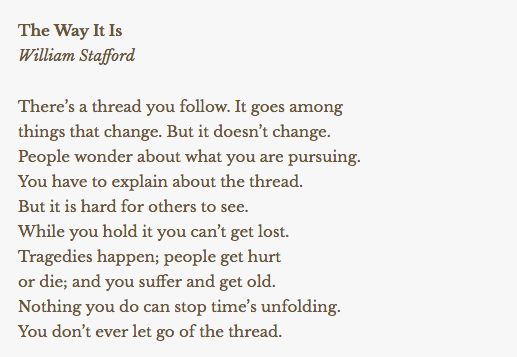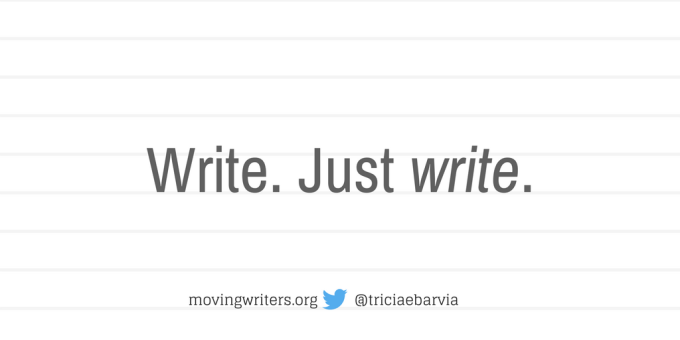EACH MONTH ON MOVING WRITERS, I try to share something writing-related happening in my classroom that might be interesting or helpful to fellow teachers. As I sat down to write this month’s post, however, news of the Parkland school shooting was just breaking—how 17 individuals died today in yet another mass school shooting.
Suddenly the ideas I’d brainstormed for this blog post didn’t seem appropriate or enough or, well, anything. Tips about conferring, strategies for prewriting, scaffolds for organizing ideas—while all these are valuable and important components of the writing process, I know that none of them are as important as the most valuable component of all—our students.
What do our students need from us right now? In challenging times—and unfortunately, there seem to be many more these days—what can we do as teachers in our classrooms to help students find their way? How do we help them find answers that we don’t have ourselves? As teachers, we often pride ourselves on being professionals, experts, the ones in the room with the answers. We think students look to us for answers, but the longer I teach, the more I think that’s wrong.
I don’t think students look to us for answers—at least not for the most deeply human issues we face in life, like love, grief, sorrow, pain, or anger. I think they look to us for the questions—to ask questions and to give them time and opportunity to ask their own, to process, to think, to wonder, to talk, to stumble, to discover, to figure out for themselves.
AS I SCROLLED THROUGH my social media feeds, I came across many teachers wondering aloud what to do with students after a day like today. Possibilities ranged: hug your kids a little tighter, tell them they’re valued, be a little kinder, read to them, remind them that they’re safe but to look out for one another, urge them to reach out to adults, and so on. Many high school teachers pondered how to address the shooting, if at all, in their lessons. That, I think, is a decision that only an individual teacher can make based on the students sitting in front of them and what they might need. Will some students want to talk about it? Will some students want to ask questions but don’t know how? Will others want to ignore what happened altogether? Will some be indifferent—or just not care?
As classroom teachers, we are not and should not feel we need to take the role of guidance counselors and most definitely not of the school psychologists. That is not our training, and I think it goes without saying that we should help students find support among our colleagues who are trained. But as classroom teachers, we stand and sit face-to-face, shoulder-to-shoulder with our students every day. And not addressing the worries and fears that they might be feeling—to proceed with business as usual—might also seem inadequate at times like these.
Some high school teachers shared that they will use class to talk about the shooting directly, and spend time looking at issues of school safety, gun control, mental health, and so on. Some teachers shared Connecticut Senator Murphy’s speech on the Senate floor, suggesting it as an entry point into the issues by studying its craft and argument. Others pointed to this episode from This American Life. Still others suggested studying any number of the many political cartoons related to this topic.
To be honest, I probably won’t do any of those things, at least not right away. Not because they’re not worthy of doing, but because for me, everything feels a little too fresh, too emotional.
But then as I sat to write this blog post, I remembered, there is something small I can do, that we can all do as writing teachers.
We can write. And we can give our students time to write—for 5, 10, or however many minutes they might need. Writing lets us process the world. We breathe in the world and writing can let us breathe out, exhale. Let our students find their safe spaces not just in our classrooms, but in the sanctuaries of their notebooks and the time to write within their pages. My guess is that many students, upon hearing the news, jumped on social media, texted their friends. It’s what I did, after all.
But sitting in a quiet place, and given quiet time, away from the barrage of new updates and hallway chatter, sitting with their pens in hand and their familiar notebooks open before them—this might be the respite that many students need.
Will it be enough? What can ever be enough on a day like today? But it’s something.
WHEN I WALK INTO CLASS, I don’t know what I’ll see on the faces of my students. I think back to other times my students and I have come back to school following news of terrible events and how then, like now, we spent some time writing. I know that many of them, like me, will be carrying the burden of knowing such senseless violence is, unfortunately, a possibility. So I’ll open class acknowledging what happened, recognizing that we’re all in different places in how we’re processing what happened, and that, like almost every day in class this year, we’ll write. But not to analyze, not to tackle a specific prompt—but simply to write, to breathe out, to lift our worries from our weary selves and let the pages of our notebooks carry our burdens for a moment.
And then, perhaps, because sometimes someone else’s writing can also help us find our way, I’ll share a poem or two. My wonderful teacher friend Amy Clark always keeps poems on hand for days like these, so I took inspiration from her and found solace in a few of the poems below. And perhaps my students will, too.


And the poem that I always, always go back to…

Friends, teachers, be well, especially on days like today. This is hard, human work.


It’s a pleasure to find such raalintoity in an answer. Welcome to the debate.
Thank you for these powerful words and poems today. I will hold on to them today. You are so right, we must provide opportunities to write.